Originally published at: Richest Country in the World: A Guide to World's Wealthiest Nations | GoVisaFree
When you look at people, can you immediately tell whether they are rich or not? Well, there can be some clues, right? The way they dress, the things they purchase… But, how accurate will the estimation be?
What describes the richness is a bigger question than it seems. The number of palaces, the amount of natural resources, the volume of international trade… There can be many variables to be included in the calculation. Luckily, there is an agreement to measure the richness of the countries and it has its own variables. Because, after all, not everyone who drives a Lamborghini can be considered rich – the chauffeur drives it as well.
To determine the richest country, we look at three measures: GDP, PPP, and GNI – and they are not just random letters.
Methodology Used to Decide the Richest Country in the World
-
GDP: GDP, also known as Gross Domestic Product, is a measure of the total value of goods and services produced within a country’s borders in a given period, usually a year. It is an important indicator of a country’s economic performance and reflects the size of its economy. GDP is usually measured in nominal terms, which means that it is expressed in the currency of the country where the goods and services are produced.
To understand this better, let’s say you decide to make and sell lemonade from your home in a year. You buy lemons, sugar, and water for $10, and sell the lemonade for $30, making a profit of $20. Now imagine there are thousands of people like you making and selling goods and services, from cars to haircuts, within a country’s borders. The total value of all these goods and services produced in the country in a year would be the country’s GDP.
-
PPP: PPP means Purchasing Power Parity and it is a measure of the relative value of different currencies based on the cost of a common basket of goods and services across different countries. PPP takes into account the fact that prices for goods and services can vary widely across countries due to differences in inflation rates, currency exchange rates, and other factors. By adjusting for these differences, PPP provides a more accurate measure of the relative wealth and purchasing power of different countries.
To understand this better, let’s say you want to compare the cost of living between two countries, the United Kingdom and Turkey. The price of 4 rolls of toilet paper in London is £2.03 (₺46,99). The price of 4 rolls of toilet paper in Istanbul is £2.12 (₺49.07). The hourly minimum wage in the UK is £9,5, which is ₺220, with which you can buy at least 16 rolls of toilet paper. On the other hand, the hourly minimum wage in Turkey is approximately ₺53, corresponding to £2,30, which is barely enough for 4 rolls of toilet paper. Although the prices are almost the same in both countries, the purchasing power of an individual in Turkey is approximately 4 times less than in the UK.
-
GNI: The last criteria is GNI and it means Gross National Income, a measure of the total income generated by a country’s residents and businesses, including income earned abroad. It includes all income earned by a country’s citizens and businesses, regardless of where they are located, the Gross National Income is an important measure of a country’s economic activity and is used to calculate important indicators such as per capita GDP and human development indices.
To picture this better, let’s say you are a citizen of the United States, but you work and earn money in Canada. The money you earn in Canada would be included in the Gross National Income of the United States since you are a resident of the United States.
In conclusion, all three measures are important tools for assessing a country’s economic performance and wealth, but they should be used in conjunction with other indicators to provide a more complete picture.
So, let’s draw this picture!
Top 15 Richest Countries in the World
Certain nations stand out from the rest, with their high GDPs, abundant resources, and thriving economies, making them the wealthiest nations and models of success in the global economic landscape. The following list takes a closer look at some of the world’s richest countries, examining their unique features and what makes them stand out.

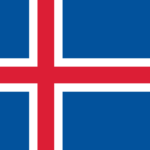 Iceland
Iceland
Iceland is a small island country located in the North Atlantic, with a population of around 360,000 people. It is known for its rugged landscapes, geothermal activity, and vibrant culture.
Despite its small size, Iceland is considered one of the richest countries in the world, with a high standard of living and a strong economy.
The Icelandic economy is based primarily on fishing and tourism, with a growing technology sector in recent years. Additionally, Iceland has a high level of economic freedom and political stability, which has helped to attract foreign investment and promote economic growth.
Another factor contributing to Iceland’s wealth is its abundant natural resources, including geothermal energy and fish stocks. These resources have helped to drive the country’s economy and promote sustainability. Overall, Iceland’s strong economy, high standard of living, and unique natural resources make it one of the most prosperous countries in the world.
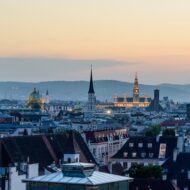
 Austria
Austria
Austria is a landlocked country located in the heart of Europe, with a population of approximately 9 million people.
Known for its impressive Alpine landscapes, rich cultural heritage, and excellent quality of life, Austria is also considered one of the richest countries in the world, with a strong and diversified economy.
Austria’s economy is driven by a mix of services, industry, and agriculture, with a focus on high-tech and innovative industries. Its high level of economic freedom and political stability has helped to attract foreign investment and promote economic growth.
Austria’s strategic location at the heart of Europe has also been a key factor in its economic success. The country has a well-developed transportation infrastructure and access to a large market, thanks to its membership in the European Union. Overall, Austria’s strong economy and high standard of living make it a prime example of a rich country.

 Taiwan
Taiwan
Taiwan is an island nation located in East Asia, with a population of approximately 23.5 million people. It is known for its vibrant culture, delicious food, and technological innovation.
Taiwan is also considered one of the richest countries in the world, with a highly developed economy.
Taiwan’s economy is driven by a mix of services, manufacturing, and technology. The country has also been successful in attracting foreign investment, thanks to its highly skilled workforce, business-friendly environment, and strategic location in the Asia-Pacific region.
Taiwan’s economic success can also be attributed to its strong focus on innovation and technology. The country is home to many of the world’s leading tech companies, such as Asus, HTC, and Acer. Additionally, Taiwan has a strong commitment to education and research, with a high percentage of its population holding advanced degrees in science and engineering.

 Netherlands
Netherlands
The Netherlands is a country located in Western Europe, bordered by Germany to the east, Belgium to the south, and the North Sea to the north and west.
With a population of over 17 million people, the Netherlands is one of the most densely populated countries in Europe. It may be relatively small among the others but the Netherlands is also one of the world’s richest nations.
The Dutch economy is renowned for its strong international trade relationships and its openness to foreign investment. It is home to some of the largest international corporations, including Shell, Unilever, and Philips. Also, the Netherlands is known for its innovative and forward-thinking approach to business, particularly in the technology and sustainable energy sectors. The country is also famous for its high-quality agricultural products, such as tulips and cheese, which are exported all over the world. Overall, the Dutch economy is diverse and well-developed, with a strong emphasis on knowledge-intensive industries, international trade, and sustainability. These factors, combined with the country’s favorable tax and regulatory environment, have contributed to the Netherlands’ status as one of the wealthiest countries in the world.
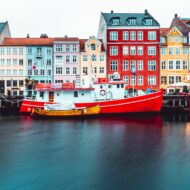
 Denmark
Denmark
Denmark, a small Nordic country with a population of just over 5 million, is one of the wealthiest and most progressive countries in the world.
Known for its strong social welfare system, commitment to sustainability, and innovative economy, Denmark is a leader in many areas of social and economic development.
Denmark has a highly skilled workforce and is known for its strong emphasis on education and research. It’s home to many leading international corporations, such as Maersk and Novo Nordisk, and has a thriving startup scene. Denmark’s economy is also highly focused on sustainability, with a strong commitment to renewable energy and sustainable agriculture. The country has been at the forefront of the green energy revolution, with wind power providing a significant portion of its electricity needs. Apart from that, Denmark has a highly developed welfare system that provides universal healthcare, education, and social benefits to its citizens. So, Denmark’s economy is characterized by innovation, sustainability, and a strong social safety net, all of which have contributed to its status as one of the wealthiest countries in the world.

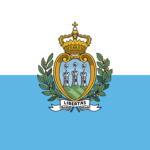 San Marino
San Marino
San Marino is a small independent country located in Southern Europe, surrounded by Italy.
Despite its small size and population of just over 33,000 people, San Marino is one of the richest countries in the world with a prosperous economy based on tourism, manufacturing, and a favorable tax environment.
San Marino’s economy is characterized by a thriving tourism industry, with the country’s picturesque landscapes and historical landmarks attracting millions of visitors each year. In addition, San Marino has a strong manufacturing sector, particularly in the areas of ceramics and textiles. The country has low corporate tax rates and tax exemptions for foreign income, which has also attracted foreign investment and wealthy individuals to the country.
Furthermore, San Marino has a well-developed banking industry, known for its strict confidentiality laws, which have made it an attractive destination for individuals and businesses seeking to protect their wealth. The country’s sophisticated financial sectors are also an important contributor to the economy, providing a range of financial services to clients from around the world. All these features combined, make San Marino one of the wealthiest countries in the world.

 Brunei
Brunei
Brunei, officially known as the Nation of Brunei, the Abode of Peace, is a small country located on the island of Borneo in Southeast Asia.
With a population of just over 430,000 people, it is one of the smallest countries in the region. Brunei is known for its abundant oil and gas reserves, which have contributed to its status as one of the richest countries in the world.
Brunei has a highly developed economy that is dominated by its oil and gas sector. However, in recent years, the government has invested heavily in diversifying its economy, focusing on developing the tourism and financial services sectors. Additionally, Brunei has a well-funded welfare system, providing free healthcare, education, and subsidized housing to its citizens. Overall, Brunei’s strong and diversified economy, combined with its robust welfare system, has contributed to its status as a wealthy and prosperous nation.
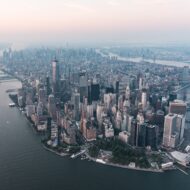
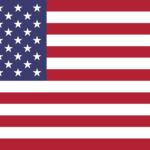 United States
United States
The United States is one of the richest countries in the world, by which, it gains most of its political power. The country has a population of over 330 million people, making it one of the most populous nations on the planet.
The US economy is characterized by its strong private sector, with a wide range of industries contributing to its growth and prosperity. The country’s tech industry, centered in Silicon Valley, is one of the most innovative and dynamic in the world, while the entertainment industry, based in Hollywood, is a major contributor to the country’s GDP and a global cultural force. The US also has a well-developed financial sector, with New York City serving as a global hub for finance and investment.
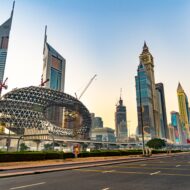
 United Arab Emirates
United Arab Emirates
The United Arab Emirates (UAE) is a federation of seven emirates located in the Middle East. The country has a population of over 9 million people, with the majority residing in cities such as Dubai and Abu Dhabi.
The UAE is known for its thriving economy, fueled by its abundant oil and gas reserves. However, in recent years, the country has made significant strides in diversifying its economy, investing heavily in sectors such as tourism, finance, and technology.
The UAE’s diversification efforts have been successful, with these sectors now playing a significant role in driving the country’s economy. Dubai, in particular, has emerged as a global hub for tourism and business, attracting millions of visitors and investors every year. Additionally, the UAE has made significant investments in developing its infrastructure, with projects such as the Burj Khalifa and the Dubai Metro contributing to the country’s economic growth and global profile.
The UAE’s economic success is also reflected in its high standard of living, with citizens and residents enjoying a range of benefits such as free healthcare and education. Overall, the UAE’s diversified and thriving economy, combined with its investment in infrastructure and social programs, has contributed to its status as one of the most prosperous countries in the world.

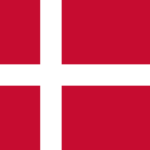 Norway
Norway
Norway is one of the most famous of all Nordic countries and it is located in Northern Europe, known for its breathtaking natural beauty and high standard of living.
Norway’s population is around 5.4 million people, with the majority residing in urban areas such as Oslo, Bergen, and Trondheim. Norway’s wealth is primarily derived from its natural resources, including oil, gas, and fish. However, the country has also made significant investments in other sectors, such as renewable energy, technology, and shipping.
One of the key factors contributing to Norway’s wealth and prosperity is its strong social welfare system, which provides a range of benefits and services to its citizens. This includes free healthcare, education, and generous parental leave policies. Additionally, Norway has a highly progressive tax system, which helps fund these social programs while also ensuring a more equitable distribution of wealth.
Norway’s economic success is also reflected in its low levels of unemployment, high levels of education, and strong public infrastructure. The country has a highly skilled workforce, with a strong focus on innovation and technology. Additionally, Norway is known for its strong environmental policies, which have helped to protect its natural resources and promote sustainable development.
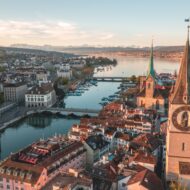
 Switzerland
Switzerland
Switzerland is in the heart of Europe, bordered by Germany, France, Italy, Austria, and Liechtenstein. Its population is approximately 8.5 million, with the majority residing in urban centers such as Zurich, Geneva, and Bern.
One of the main factors contributing to Switzerland’s wealth and prosperity is its highly developed financial sector, which is renowned for its stability and expertise. It is also a major hub for international trade, with its strong export-oriented economy supported by a range of industries such as pharmaceuticals, machinery, and precision instruments. Additionally, Switzerland is known for its world-class education system, which produces a highly skilled and educated workforce.
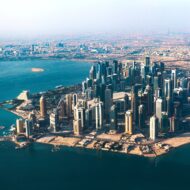
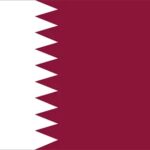 Qatar
Qatar
Qatar is a small, peninsular country located in the Middle East, bordered by Saudi Arabia and the Persian Gulf.
Although it’s small, Qatar has one of the highest per capita incomes in the world, with a population of approximately 2.8 million people.
One of the main reasons for Qatar’s wealth is its vast reserves of oil and natural gas, which have enabled the country to rapidly develop its economy and infrastructure over the past few decades. It has invested heavily in sectors such as construction, real estate, and finance, as well as in high-tech industries such as aerospace and information technology.
In addition to its natural resources, Qatar’s strategic location at the crossroads of global trade routes has made it quite important for international commerce and transportation. The country has also invested heavily in its education system, producing a highly skilled and educated workforce that is driving innovation and growth across a range of industries.
Despite its wealth, Qatar faces a number of challenges, including a reliance on its oil and gas industry, as well as social and political issues such as labor rights and freedom of expression. Nevertheless, Qatar remains a key player in the global economy and a major force in the Middle East.

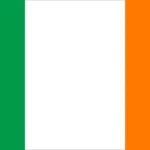 Ireland
Ireland
Ireland, also known as the Emerald Isle, is a small island nation located in the North Atlantic, bordered by the United Kingdom.
With a population of approximately 4.9 million people, Ireland has become one of the wealthiest countries in the world.
One of the main reasons for Ireland’s success is its diversified economy, which has been transformed from an agricultural-based economy to a knowledge-based one, with a strong focus on technology and innovation. The country has attracted significant foreign investment due to its low corporate tax rates, skilled workforce, and favorable business environment.
Ireland has also invested heavily in education and infrastructure, with a well-educated workforce that is driving innovation and growth across a range of industries, from pharmaceuticals to financial services along with the newly booming tourism industry.

 Singapore
Singapore
Singapore is a small city-state located in Southeast Asia, known for its clean streets, diverse cuisine, and efficient transportation system
Singapore has emerged as one of the wealthiest countries in the world, with a population of around 5.7 million people.
One of the main factors contributing to Singapore’s success as the second richest country in the world is its strategic location for international trade and finance. Singapore has a well-developed infrastructure, a skilled workforce, and a strong emphasis on innovation and technology, which has helped to attract significant foreign investment. Singapore has also invested heavily in education and workforce training, with a strong emphasis on science, technology, engineering, and math (STEM) fields.
In addition, Singapore has implemented sound economic policies, including low taxes, open markets, and a business-friendly regulatory environment, which has helped to attract and retain businesses and entrepreneurs. The country has also worked to promote social cohesion and stability, with policies focused on healthcare, affordable housing, and income equality.

 Luxembourg
Luxembourg
Luxembourg is a tiny country situated in Western Europe and bordered by Germany, France, and Belgium.
Although it has a population of just over 650,000, Luxembourg boasts a high standard of living and a thriving economy. It is considered the richest country in the world, thanks in large part to its strong financial sector, which is home to many international banks and financial institutions. Luxembourg’s economy is also supported by other sectors, including manufacturing, transportation, and technology. The country’s strategic location and excellent infrastructure also contribute to its success as a hub for international business and trade.
One of the main reasons for Luxembourg’s success as the world’s richest country is its stable and diversified economy, which is based on a combination of industry, finance, and services. The country is home to many multinational corporations and financial institutions and also has a favorable tax environment for businesses and individuals, which has helped to attract significant foreign investment.
<div id="elementor-tab-content-9441" class="elementor-tab-content elementor-clearfix" data-tab="1" role="tabpanel" aria-labelledby="elementor-tab-title-9441"><p data-pm-slice="1 1 []">The richest countries in the world are those with the highest per capita GDP (Gross Domestic Product), which measures the total value of goods and services produced in a country divided by its population. Some of the richest countries in the world include Qatar, Luxembourg, Singapore, United Arab Emirates, Norway, Switzerland, and the United States.</p></div>
</div>
<div class="elementor-toggle-item">
<div id="elementor-tab-title-9442" class="elementor-tab-title" data-tab="2" role="tab" aria-controls="elementor-tab-content-9442" aria-expanded="false">
<span class="elementor-toggle-icon elementor-toggle-icon-left" aria-hidden="true">
<span class="elementor-toggle-icon-closed"><i class="fas fa-caret-right"></i></span>
<span class="elementor-toggle-icon-opened"><i class="elementor-toggle-icon-opened fas fa-caret-up"></i></span>
</span>
<a href="" class="elementor-toggle-title">What factors contribute to a country's wealth?</a>
</div>
<div id="elementor-tab-content-9442" class="elementor-tab-content elementor-clearfix" data-tab="2" role="tabpanel" aria-labelledby="elementor-tab-title-9442"><p data-pm-slice="1 1 []">Many factors contribute to a country’s wealth, including its natural resources, infrastructure, political stability, education levels, innovation and technology, and access to global markets. Countries with stable economies, favorable tax policies, and strong financial and banking sectors often attract foreign investment and generate high levels of economic growth.</p></div>
</div>
<div class="elementor-toggle-item">
<div id="elementor-tab-title-9443" class="elementor-tab-title" data-tab="3" role="tab" aria-controls="elementor-tab-content-9443" aria-expanded="false">
<span class="elementor-toggle-icon elementor-toggle-icon-left" aria-hidden="true">
<span class="elementor-toggle-icon-closed"><i class="fas fa-caret-right"></i></span>
<span class="elementor-toggle-icon-opened"><i class="elementor-toggle-icon-opened fas fa-caret-up"></i></span>
</span>
<a href="" class="elementor-toggle-title">How do the richest countries compare in terms of income inequality?</a>
</div>
<div id="elementor-tab-content-9443" class="elementor-tab-content elementor-clearfix" data-tab="3" role="tabpanel" aria-labelledby="elementor-tab-title-9443"><p data-pm-slice="1 1 []">Despite their wealth, many of the richest countries in the world still face issues with income inequality. Some countries, such as Norway and Switzerland, have implemented progressive tax systems and social welfare programs to help mitigate income disparities. Others, such as the United States and Singapore, have higher levels of income inequality and are working to address this through policy changes and social programs.</p></div>
</div>
<div class="elementor-toggle-item">
<div id="elementor-tab-title-9444" class="elementor-tab-title" data-tab="4" role="tab" aria-controls="elementor-tab-content-9444" aria-expanded="false">
<span class="elementor-toggle-icon elementor-toggle-icon-left" aria-hidden="true">
<span class="elementor-toggle-icon-closed"><i class="fas fa-caret-right"></i></span>
<span class="elementor-toggle-icon-opened"><i class="elementor-toggle-icon-opened fas fa-caret-up"></i></span>
</span>
<a href="" class="elementor-toggle-title">What are the poorest countries in the world?</a>
</div>
<div id="elementor-tab-content-9444" class="elementor-tab-content elementor-clearfix" data-tab="4" role="tabpanel" aria-labelledby="elementor-tab-title-9444"><p data-pm-slice="1 1 []">Many countries in the world are considered to be poor or have low levels of economic development. It is important to note that measuring poverty can be complex and there are different ways to do it. Burundi, South Sudan, Malawi, Mozambique, and Niger are some of the poorest countries in the world based on their Gross Domestic Product (GDP) per capita.</p></div>
</div>
<div class="elementor-toggle-item">
<div id="elementor-tab-title-9445" class="elementor-tab-title" data-tab="5" role="tab" aria-controls="elementor-tab-content-9445" aria-expanded="false">
<span class="elementor-toggle-icon elementor-toggle-icon-left" aria-hidden="true">
<span class="elementor-toggle-icon-closed"><i class="fas fa-caret-right"></i></span>
<span class="elementor-toggle-icon-opened"><i class="elementor-toggle-icon-opened fas fa-caret-up"></i></span>
</span>
<a href="" class="elementor-toggle-title">How do the richest countries contribute to global development and aid?</a>
</div>
<div id="elementor-tab-content-9445" class="elementor-tab-content elementor-clearfix" data-tab="5" role="tabpanel" aria-labelledby="elementor-tab-title-9445"><p data-pm-slice="1 1 []">Many of the richest countries in the world are also major donors of foreign aid and development assistance. For example, Norway and Sweden are among the world’s top contributors to international aid, while countries like the United States and the United Arab Emirates have made significant contributions to disaster relief and humanitarian efforts in recent years. However, there is an ongoing debate about the effectiveness of foreign aid and the role of wealthy countries in promoting global development and reducing poverty.</p></div>
</div>
</div>
</div>
</div>
</div>
</div>
</div>
</section>
</div>